New data put medicine costs and spending in context
A new era of medicine is when breakthrough science is transforming patient care and enabling us to more effectively treat chronic diseases.
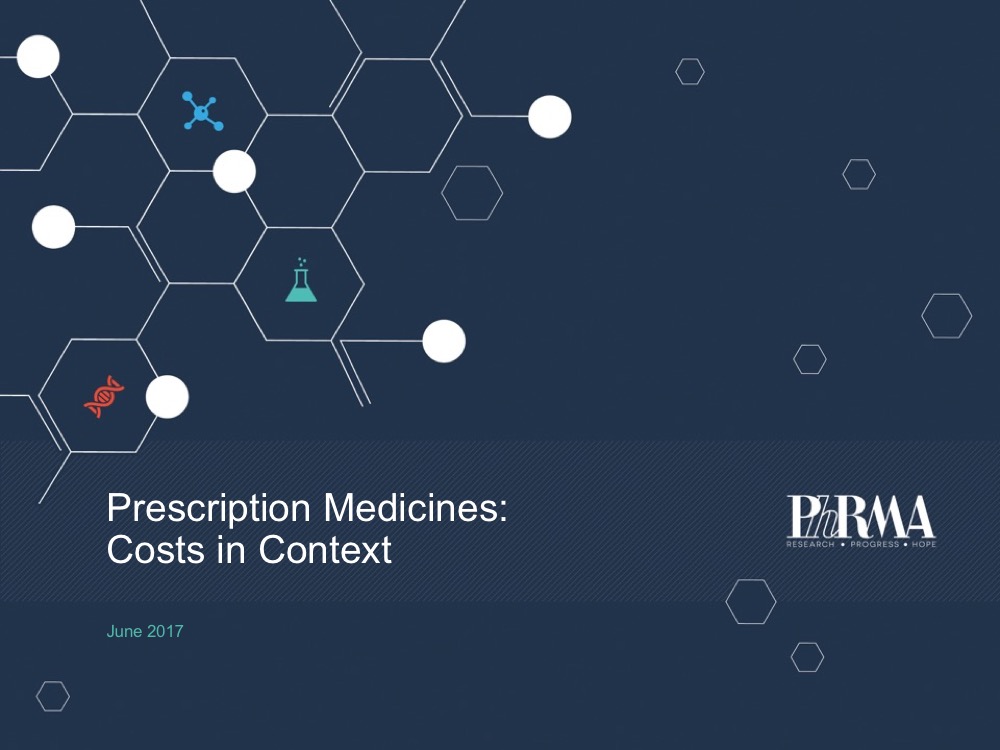
New data put medicine costs and spending in context.
A new era of medicine is when breakthrough science is transforming patient care and enabling us to more effectively treat chronic diseases.

New data put medicine costs and spending in context.
We are in a new era of medicine where breakthrough science is transforming patient care and enabling us to more effectively treat chronic diseases, like cancer and diabetes, which are the biggest cost driver in our health care system.
In the midst of this tremendous progress, medicine costs are growing at the slowest rate in years. In fact, after factoring in discounts and rebates, prices for brand medicines increased just 3.5 percent last year and total spending on medicines increased just 4.8 percent last year.
Yet, too often these negotiated savings are not shared with patients who are increasingly being asked to pay more out of pocket.
Our newly released Prescription Medicines: Costs in Context explains how robust negotiation and competition in the marketplace help to keep costs under control and highlights how too often negotiated savings do not make their way to patients. Stories of patients who struggle to access their medicines are why biopharmaceutical companies are working with private health insurers to implement new payment arrangements for medicines that treat a variety of diseases. Our industry is committed to working with policymakers to advance solutions that further enhance the private marketplace, lower costs for patients and promote continued medical innovation.
Must-know facts include:
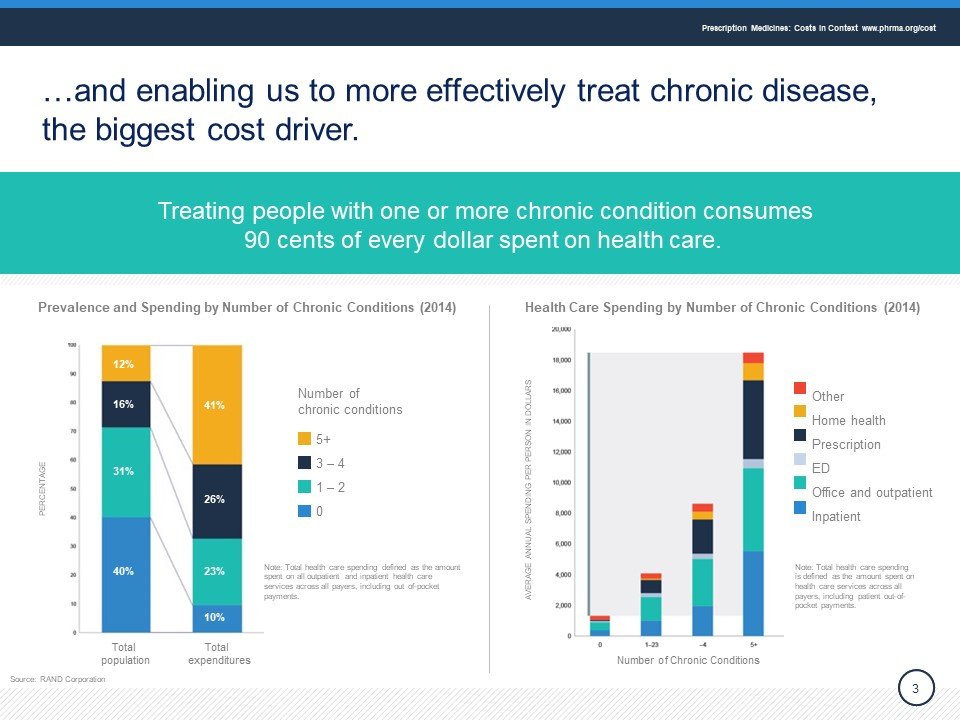
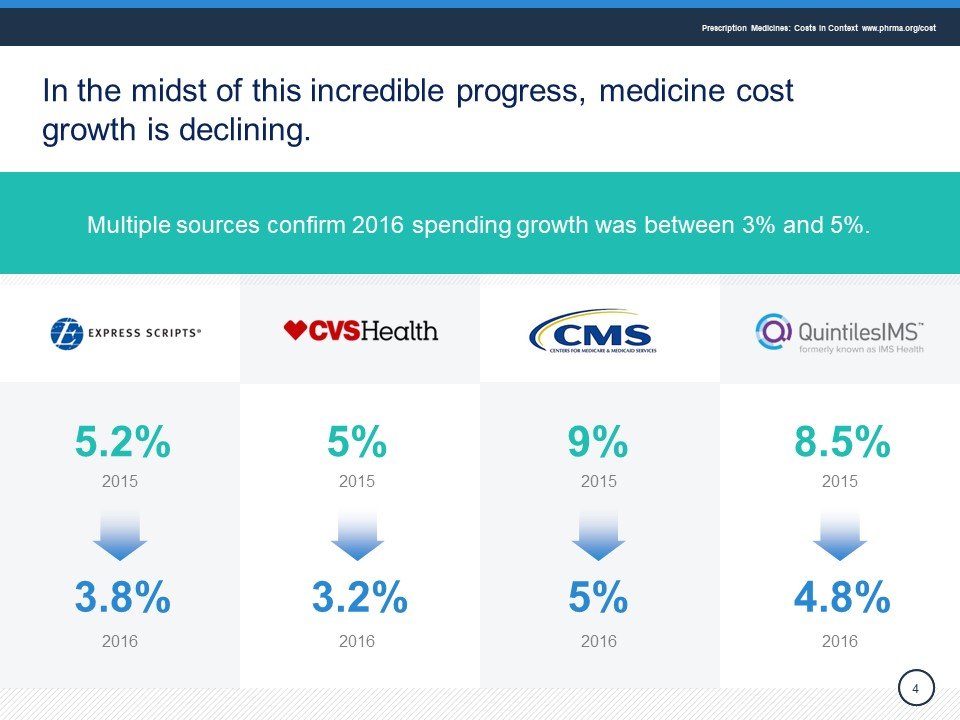
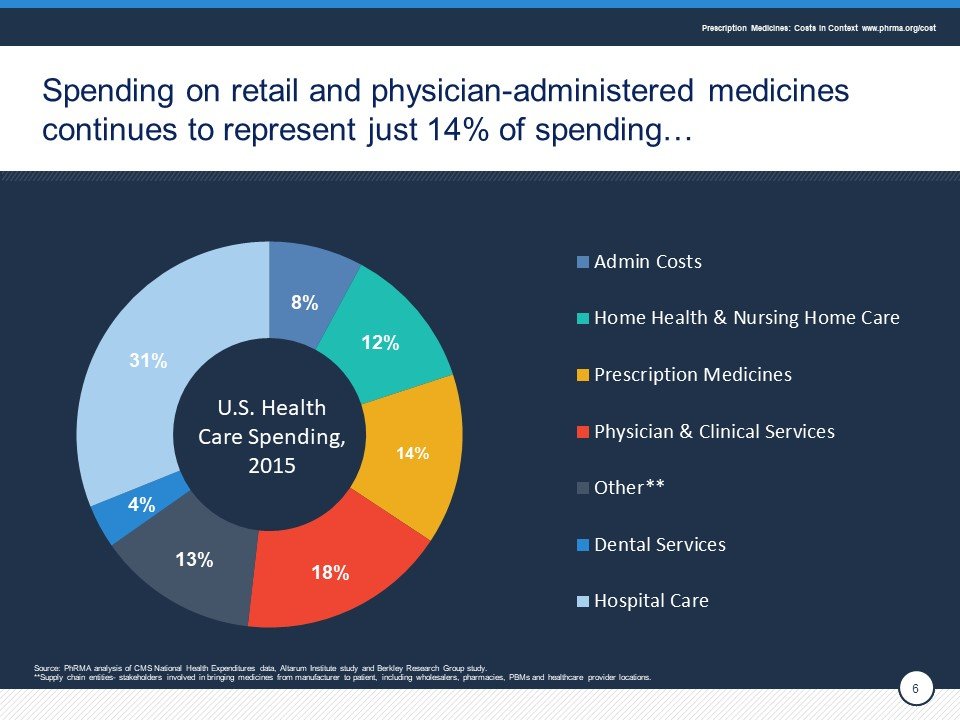
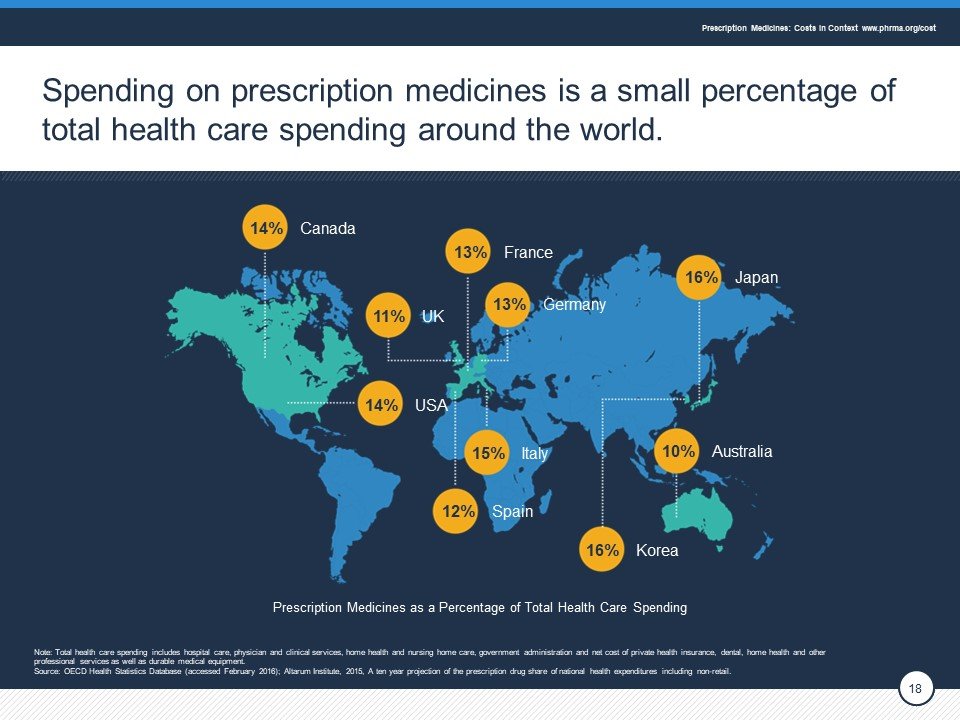
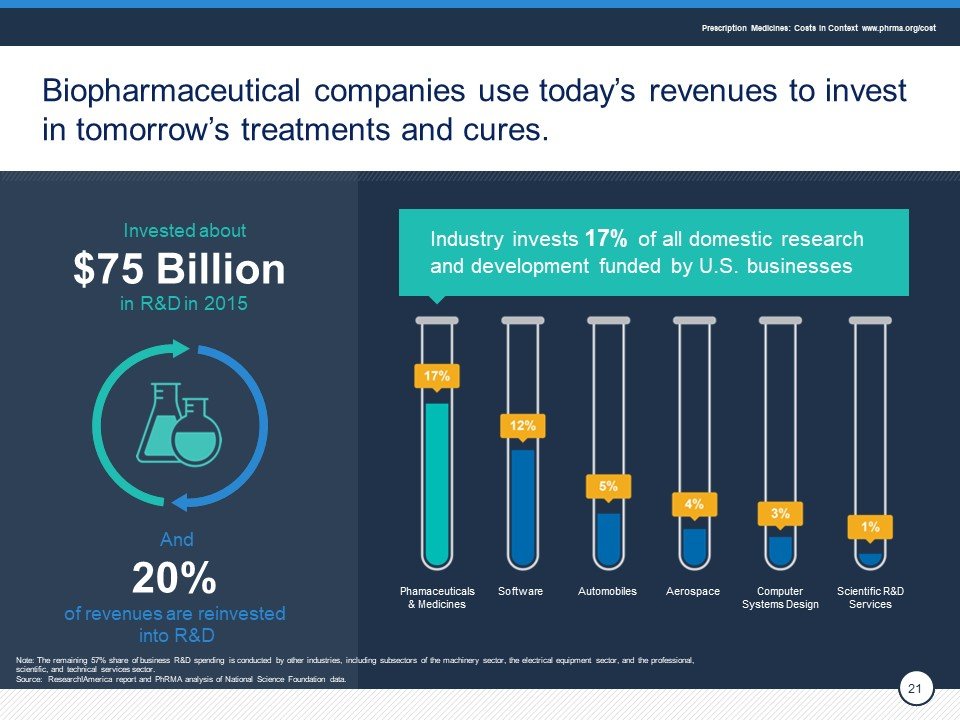
Get more at PhRMA.org/cost.